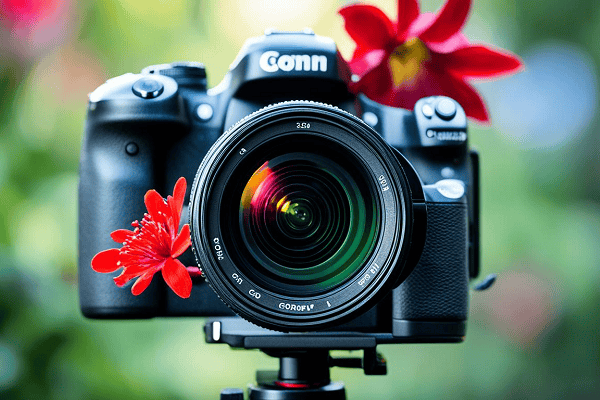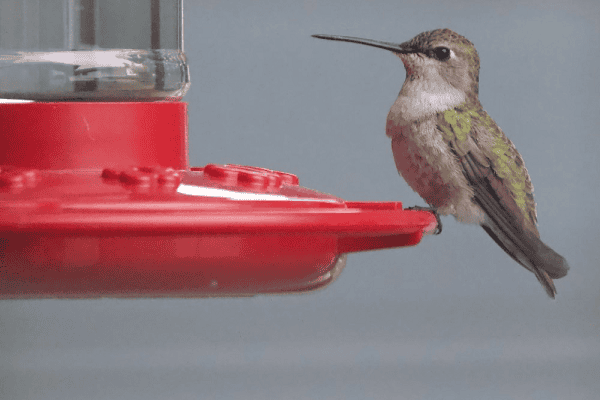Photographing Hummingbirds: Tips and Tricks for Amazing Shots
Photographing hummingbirds is always exciting. These small, lively birds are perfect for photographers who love action and color. They’re found all over the Americas and will challenge your quick thinking. To capture their beauty, you need to know their habits and how to predict their moves.
Understanding your subject is key to great photos. With hummingbirds, it means knowing when and where they’ll be active. This knowledge helps you set up your camera and get the perfect shot.
Here are some tips to help you start:
- Use a fast shutter speed to stop their movement.
- Pick the right lens for close-up pictures.
- Find a sunny spot for bright colors.
- Be patient and quiet to earn their trust.
- Try different angles and perspectives.
Remember, practice makes perfect. Keep trying, and you’ll soon be taking amazing photos of hummingbirds.
Hummingbird Behavior
To take amazing photos of hummingbirds, you need to know their behavior and habits well. Start by watching these amazing birds. Learn about their behavior, patterns, and where they like to perch. This will help you guess where they’ll move next and get the best shot.

Observation and Preparation are Everything
First, set up hummingbird feeders and flowers that attract hummingbirds in your yard. Watch where they like to sit and hang out. Since hummingbirds follow routines, knowing their daily habits will help plan your photo shoots. Notice how they move and hover around flowers.
Experiment with Perched Birds
Start with taking photos of hummingbirds when they’re perched. Use a wireless remote to get close-up shots. Try different camera settings and angles to see what works best. Be patient and wait for the right moment to capture their fast wing movements.
Mastering the Lighting
Lighting is key for great hummingbird photos. You want soft, even light that doesn’t create harsh shadows or highlights. Open shade is perfect because it stops the hummingbirds’ shiny feathers from getting blown out.
Obsess Over the Lighting
Hummingbirds have shiny feathers that can get overexposed to harsh light. Use soft light from the sun or a flash for the best shots. If you’re using a flash, soften the light with small softboxes for a natural look.
This softens shadows and highlights, making your hummingbird photos look better. Pay attention to the light quality and try different setups to get it right. Learning about lighting is crucial for hummingbird lighting, soft lighting for hummingbirds, avoiding harsh shadows and highlights, and using flash for hummingbirds.
Gear Recommendations for Hummingbird Photography
To get great Photographing of hummingbirds, you need the right gear. Choose high-quality camera equipment, like telephoto lenses for hummingbirds. These lenses help you stay far from the birds but still capture their fast movements.
Fast autofocus is key for catching hummingbirds in flight. These birds move quickly and unpredictably. So, you need a camera that can focus fast to get clear shots.
Opt for High-Quality Gear
For hummingbirds on a perch, basic gear might be enough. But for flying birds, you’ll need better equipment. A camera with advanced autofocus and a top-notch telephoto lens is best for in-flight shots.
Shutter speeds for hummingbird photos are fast, between 1/2500 and 1/4000 of a second. Your camera must be able to focus quickly. Also, ISO settings are often between ISO 2000 and ISO 4500. So, a camera with low noise is perfect.

The Nikon 1 CX 70-300mm f/4.5-5.6 lens is great for hummingbird photos. It has fast autofocus and captures clear images from far away. This lens is perfect for showing the details and colors of hummingbirds.
Ethical Considerations
When taking photos of hummingbirds, always think about their well-being first. Never use methods like netting, caging, or confining them. These actions can stress them out, and hummingbirds can’t handle stress well.
Setting up feeders can help with your photography, but keep them clean and use the right nectar mix. This way, you won’t make the birds dependent on you. Ethical photographers focus on the birds’ safety and only take photos that don’t disturb them.
Pay Attention to Ethics
Think about how your actions affect the hummingbirds. Give them their space and don’t interrupt their natural behaviors. Always put their well-being before getting the perfect photo. By following ethical guidelines, you can take amazing pictures and keep the birds safe and happy.
Photographing Hummingbirds
Capturing hummingbirds with your camera is both exciting and fulfilling. These tiny birds are amazing flyers, beating their wings 50 times per second. To get great photos, you need patience, practice, and to know your subject well.
Start with hummingbirds that are sitting still. They are easier to photograph. Use a fast shutter speed, like 1/1000th or 1/2000th of a second, to freeze their movements. Set your camera to shutter priority mode to control the shutter speed and let the camera adjust the aperture. A wide aperture (smaller f-stop value) lets in more light, preventing dark photos.
When you’re ready, try photographing hummingbirds in flight. Use remote triggers and rapid-fire shooting for sharp, well-composed shots. Look for the right lighting and background to make your photos stand out. Red, pink, and orange flowers like trumpet creeper and columbine attract these birds.
Hummingbirds vary greatly in size, from the tiny bee hummingbird (Mellisuga Helena) to the giant hummingbird (Patagonia gigas). As you improve your skills, focus on the charming male ruby-throated hummingbird. It’s a favorite among photographers.
Tips from Experienced Photographers
To get great hummingbird photos, you need patience, practice, and a sharp eye. Experienced photographers share their best tips to improve your hummingbird shots.
Hang Lots of Hummingbird Feeders
Elijah Gildea from Redding, California, photographs six hummingbird species often in his backyard. He uses 12 large feeders to draw these quick birds. Having many feeders in good spots helps you see and photograph hummingbirds better.
Know Hummingbirds’ Habits
Bill Friggle of Denver, Pennsylvania, says knowing hummingbirds’ habits helps you find them for photos. Watch their eating habits, where they sit, and how they fly. This lets you get ready for great shots.
Master Your Camera
Mike Bond from Sumter, South Carolina, started wildlife photography in 2007 with a Canon EOS 5D Mark III. Leslie Scopes Anderson from Arcata, California, uses a Nikon D4S with a NIKKOR 200-400 lens. Knowing your camera well, especially autofocus is key for hummingbird photos.
Shoot Multiple Frames
Mary Sullivan from Delano, Minnesota, and Mary Clark from Mantachie, Mississippi, say shoot lots of photos fast. Hummingbirds are quick, so more shots mean better chances of a great photo.
Watch for Perching Hummingbirds
Susan Chilkotowsky-Kain from Marlton, New Jersey, and Jackie Taylor from Hubert, North Carolina, suggests looking for hummingbirds that sit. These shots are often clearer and more interesting than flying ones.

Pay Attention to the Light
Billy Walker from Fort Walton Beach, Florida, and Vincent Drexler from Canal Fulton, Ohio, say watch the light for your photos. Good lighting avoids harsh shadows and highlights that can ruin your shots.
Plant Lots of Flowers
Mary Sullivan from Delano, Minnesota, attracts hummingbirds with bright red clothes and zinnia flowers. Bud Hensley suggests using water-like sprinklers to draw them in. Planting flowers that hummingbirds like makes great backgrounds for photos.
Keep Quiet
Susan Chilkotowsky-Kain from Marlton, New Jersey, and Jackie Taylor from Hubert, North Carolina, stress patience and blending in. Stay quiet and still to catch their real behavior and movements.
Follow these tips from pros to take amazing hummingbird photos. You’ll capture their beauty and speed.
Recommended Articles:
Wrapping Up…
Photographing hummingbirds is both exciting and rewarding. It lets you capture their beauty and energy. By learning about their behavior, mastering lighting, and using top-notch gear, you can take amazing photos. These photos show the hummingbirds’ agility and grace.
If you’re into wildlife photography or just starting, remember: that patience, practice, and love for the birds are key. Follow ethical practices, set up great spots, and learn from pros. This way, you’ll improve your skills and take photos that wow and inspire others.
So, dive into photographing Hummingbirds and try different techniques. Let your love for these birds lead you to capture their essence. With hard work and a keen eye, you can make beautiful art. This art celebrates the beauty and magic of these incredible birds.






